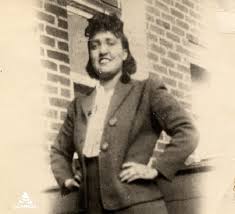
The Complicated History of HeLa Cells: Henrietta Lacks’ Legacy in Biomedical Research
Henrietta Lacks was born on August 1, 1920, in Roanoke, Virginia. After her mother’s death in 1924, she was sent to live with her grandfather in Clover, Virginia, where she shared a home with her cousin, David “Day” Lacks. The two later married in 1941 and had five children. Seeking better opportunities, they moved to Turner Station, a working-class community in Maryland, near Baltimore.
In early 1951, Henrietta began experiencing abnormal vaginal bleeding and sought care at Johns Hopkins Hospital, one of the few institutions at the time that treated Black patients. Doctors discovered a malignant cervical tumor, and she began undergoing radium treatments, the standard therapy at the time. Without her knowledge or consent, doctors took samples of her cancerous and healthy cervical cells and sent them to Dr. George Gey, a prominent researcher. Unlike other cells that typically died within days in lab cultures, Henrietta’s cells—dubbed “HeLa” using the first two letters of her first and last name—proved astonishingly resilient. They multiplied indefinitely, making them the first known “immortal” human cells.
Henrietta passed away on October 4, 1951, at the age of 31, but her cells would go on to change the landscape of modern medicine. HeLa cells became instrumental in developing the polio vaccine, advancing cancer research, understanding viruses, and even contributing to gene mapping and cloning. Their widespread use in labs across the world has led to numerous medical breakthroughs, and HeLa cells continue to be an essential tool in research today.
Despite their massive contributions to science, Henrietta’s cells were taken without her or her family’s knowledge, raising major ethical concerns. Her family remained unaware of the existence and use of HeLa cells until the mid-1970s, when researchers began contacting them for genetic testing. By then, HeLa cells had been commercialized, distributed worldwide, and used in thousands of studies—all while the Lacks family struggled financially and lacked proper healthcare. This injustice highlighted glaring racial and ethical disparities in medical research.
The case of Henrietta Lacks became a turning point in the discussion on informed consent. At the time her cells were taken, there were no legal requirements for doctors to obtain permission from patients before using their biological materials for research. Henrietta’s story helped shape policies that would later establish the necessity of informed consent. In 1991, the U.S. government introduced the “Common Rule,” which set ethical guidelines for human research subjects, ensuring that patients are fully informed about how their tissues and data are used.
Yet, debates over patient rights and bioethics persist. The Lacks family has fought for justice and accountability from companies profiting from HeLa cells without permission. In 2023, they reached a confidential settlement with one of the corporations that had long profited from HeLa cells. Lawsuits against other companies soon followed. These legal battles continue to raise questions about medical exploitation and the commercialization of biological materials.
Henrietta’s legacy extends beyond her scientific contributions. Her story is now widely recognized as a lesson in medical ethics and racial injustice. In recent years, she has been honored in multiple ways: a historical marker in Clover, Virginia, bears her name, a high school in Washington state is named after her, and in 2010, Rebecca Skloot’s best-selling book The Immortal Life of Henrietta Lacks brought her story into the global spotlight.
Henrietta Lacks’s life and the impact of her cells remain a testament to the need for ethical medical practices and respect for patient rights. While HeLa cells have saved countless lives, her story reminds us of the importance of consent, transparency, and equitable treatment in medical research.
